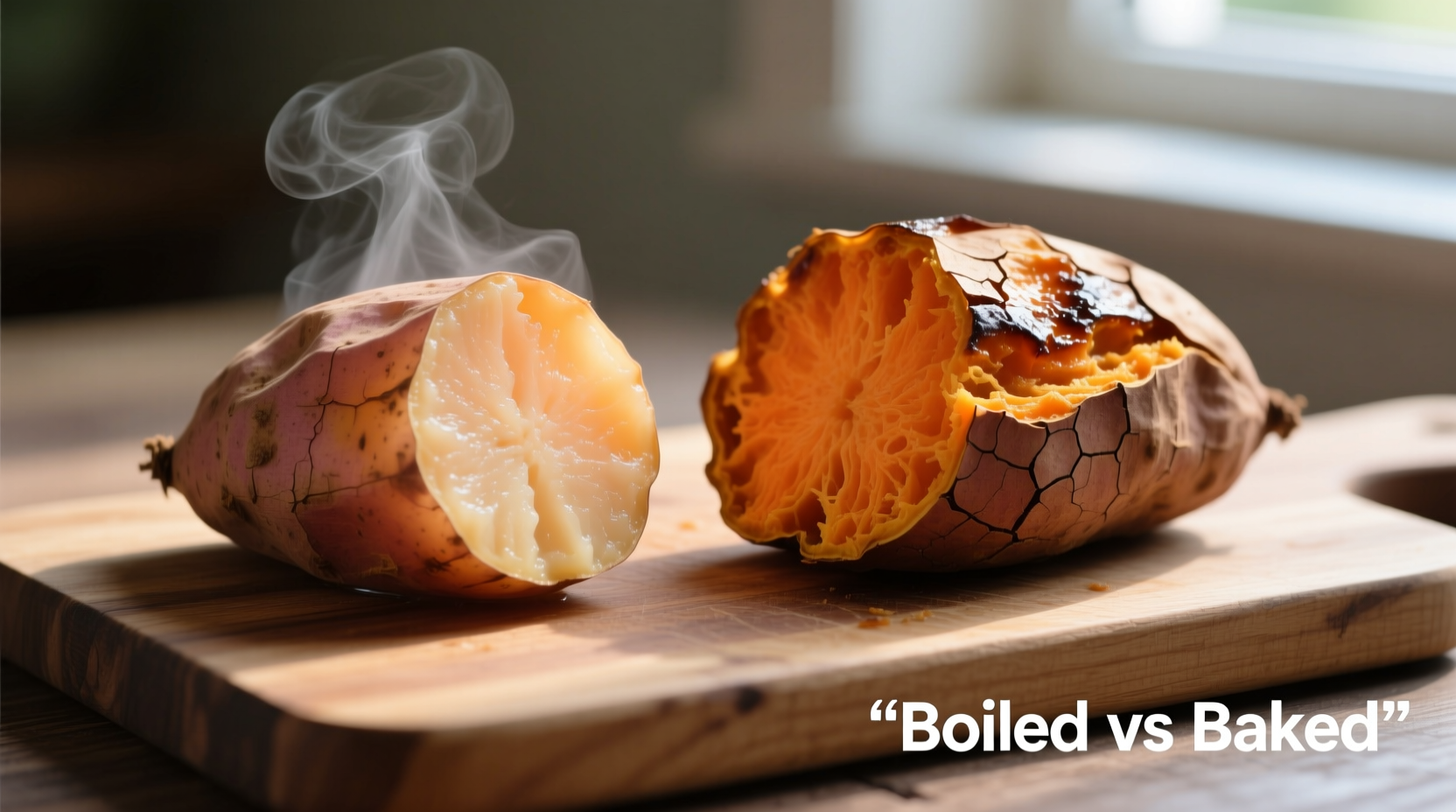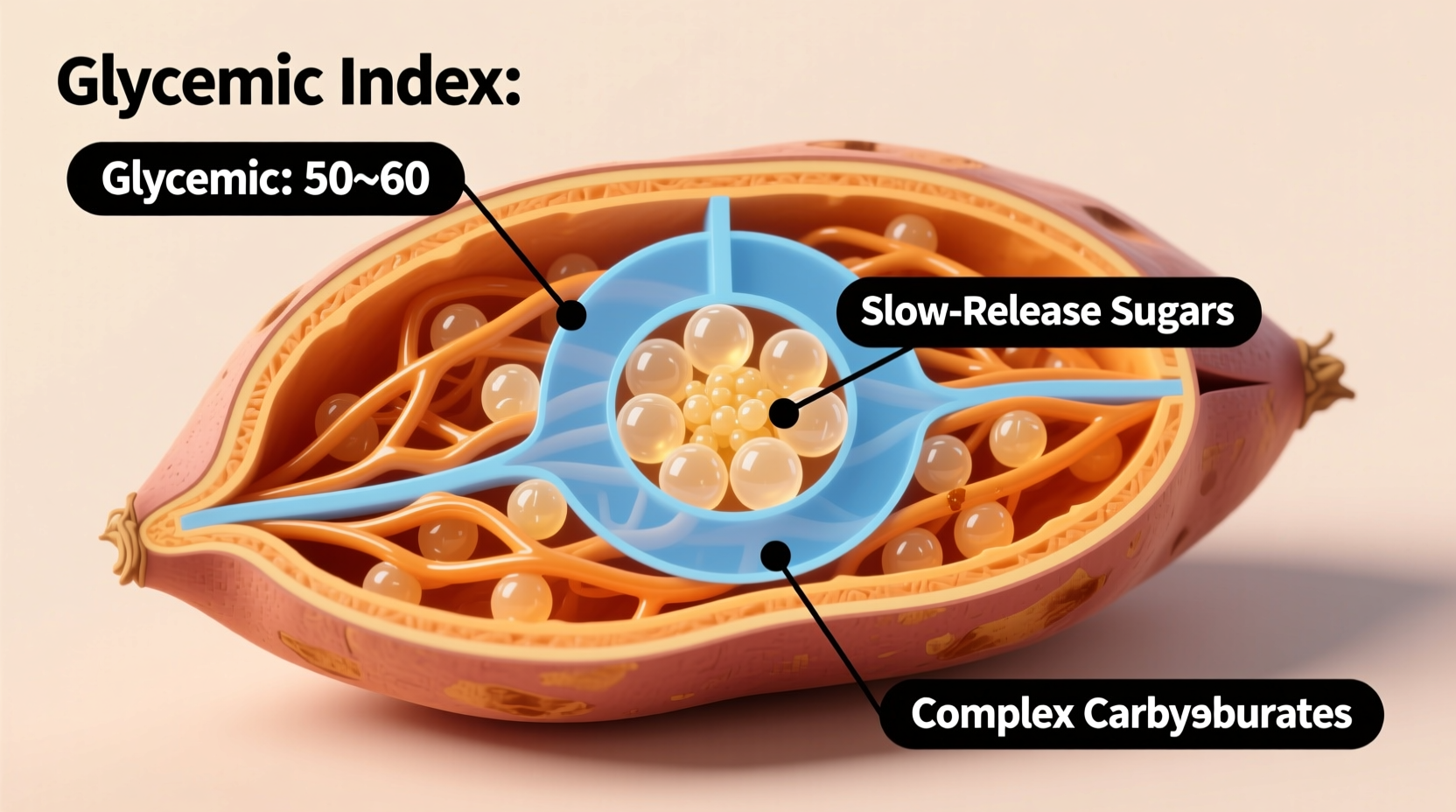Understanding sweet potato glycemic index values is crucial for anyone managing blood sugar levels. Unlike regular potatoes that consistently rank high on the glycemic scale, sweet potatoes offer more flexibility through strategic preparation and variety selection. This guide delivers evidence-based insights you can apply immediately to enjoy sweet potatoes while supporting stable blood glucose.
What Exactly Is Glycemic Index and Why It Matters
Glycemic index measures how quickly carbohydrate-containing foods raise blood glucose levels compared to pure glucose (which scores 100). Foods scoring 55 or below are considered low GI, 56-69 medium GI, and 70+ high GI. The American Diabetes Association emphasizes that low-GI foods help maintain steady blood sugar levels, reducing diabetes complications risk.
Unlike simple calorie counting, glycemic index considers how food is processed by your body. This explains why two foods with identical carbohydrate content can affect blood sugar differently. Sweet potatoes demonstrate this principle perfectly - their glycemic impact transforms dramatically based on cooking method and variety.
Sweet Potato Varieties and Their Glycemic Values
Not all sweet potatoes affect blood sugar equally. Research published in the American Journal of Clinical Nutrition shows significant variation between varieties. Orange-fleshed sweet potatoes (the most common type) generally have higher GI values than purple or white varieties.
| Sweet Potato Variety | Preparation Method | Glycemic Index Value | Glycemic Load (per 100g) |
|---|---|---|---|
| Orange-fleshed | Boiled, cooled | 44 | 11 |
| Orange-fleshed | Boiled, hot | 63 | 17 |
| Orange-fleshed | Baked | 94 | 42 |
| Purple-fleshed | Boiled | 51 | 13 |
| White-fleshed | Boiled | 58 | 15 |
Data sourced from National Institutes of Health research demonstrates how preparation dramatically affects glycemic impact. Notice how baking increases the GI value by over 50 points compared to boiling for orange sweet potatoes.
How Cooking Method Transforms Glycemic Impact
The cooking method significantly alters sweet potato's glycemic properties through starch gelatinization. When you bake sweet potatoes, the dry heat causes starch granules to swell and absorb water, making them more readily digestible. Boiling creates a different effect - some starch leaches into the water, and cooling after boiling forms resistant starch that slows digestion.

Research from the USDA Agricultural Research Service shows that cooling boiled sweet potatoes for 24 hours increases resistant starch content by 30-40%, effectively lowering their glycemic impact. This explains why potato salad often has lower GI than hot mashed potatoes - the same principle applies to sweet potatoes.
Sweet Potatoes vs. Regular Potatoes: A Blood Sugar Comparison
Many people assume all potatoes behave similarly regarding blood sugar, but sweet potatoes generally offer better glycemic control. Russet potatoes typically score 85-95 on the glycemic index regardless of preparation method, while sweet potatoes provide options across the glycemic spectrum.
The key difference lies in their carbohydrate composition. Sweet potatoes contain more complex carbohydrates and fiber than white potatoes. According to Harvard T.H. Chan School of Public Health, the soluble fiber in sweet potatoes slows glucose absorption, contributing to their more favorable glycemic profile.
Practical Strategies for Managing Blood Sugar with Sweet Potatoes
You don't need to eliminate sweet potatoes from your diet - you just need to prepare them strategically. Here are evidence-based techniques to minimize blood sugar impact:
- Choose boiling over baking: Boiled sweet potatoes have nearly half the glycemic impact of baked ones
- Cool before eating: Refrigerate boiled sweet potatoes for 24 hours to increase resistant starch
- Pair with protein and fat: Combine with chicken, fish, or olive oil to further slow glucose absorption
- Select purple varieties: These contain anthocyanins that may improve insulin sensitivity
- Watch portion sizes: Stick to 1/2 cup servings to manage total carbohydrate intake
Who Should Be Particularly Mindful of Sweet Potato's Glycemic Impact?
While sweet potatoes offer nutritional benefits for most people, certain individuals should pay special attention to preparation methods:
Those with type 2 diabetes should prioritize boiled and cooled sweet potatoes rather than baked versions. Research from the American Diabetes Association shows that substituting high-GI foods with low-GI alternatives can reduce HbA1c levels by 0.5% over 12 weeks - a clinically significant improvement.
People with insulin resistance or prediabetes can enjoy sweet potatoes as part of a balanced diet but should monitor their personal glucose response. Individual responses to carbohydrates vary, so continuous glucose monitoring provides the most accurate picture of how sweet potatoes affect your specific metabolism.
Maximizing Sweet Potato Benefits While Minimizing Blood Sugar Spikes
The secret to enjoying sweet potatoes without blood sugar concerns lies in understanding their transformation during cooking. By choosing appropriate varieties and preparation methods, you can harness their nutritional benefits while minimizing glycemic impact. Remember that sweet potatoes offer valuable nutrients like vitamin A, vitamin C, and potassium that support overall health beyond just blood sugar management.
For optimal results, incorporate boiled and cooled sweet potatoes into balanced meals with protein, healthy fats, and non-starchy vegetables. This approach provides sustained energy without dramatic blood glucose fluctuations, making sweet potatoes a valuable component of a blood-sugar-friendly diet when prepared correctly.











 浙公网安备
33010002000092号
浙公网安备
33010002000092号 浙B2-20120091-4
浙B2-20120091-4